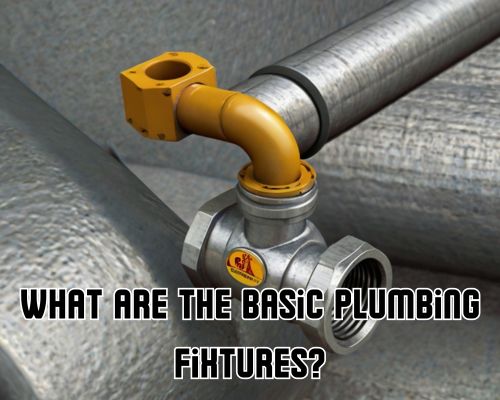What Are the Basic Plumbing Fixtures? A Comprehensive Guide for Australian Homes
Whether you’re planning a bathroom renovation in Melbourne, building a new home in Brisbane, or upgrading your kitchen in Perth, understanding what the basic plumbing fixtures are is crucial. These essential components form the foundation of any residential or commercial plumbing system. In Australia, where water efficiency and sustainability are paramount, knowing your fixtures isn’t just practical—it’s environmentally responsible.

With Dean Owens of Plumber Warragul, we will walk you through the core plumbing fixtures found in Australian homes, highlight their importance, and help you make informed decisions whether you’re hiring a licensed plumber or tackling a small project yourself.
What Exactly Are Plumbing Fixtures?
Plumbing fixtures are permanent appliances connected to a plumbing system, used to deliver or drain water. They’re the “visible” elements—what you interact with daily in your kitchen, bathroom, or laundry. Think of taps, sinks, toilets—these are the MVPs of modern plumbing infrastructure.
Core Characteristics of Plumbing Fixtures:
- Direct connection to potable water and sewage systems
- Made from durable, corrosion-resistant materials (ceramic, stainless steel, brass, etc.)
- Designed for regular human interaction and hygiene
The Basic Plumbing Fixtures in Australian Homes
Here’s a detailed rundown of the fundamental plumbing fixtures commonly found across Australian households, from Sydney townhouses to rural Queensland properties:
1. Taps (Faucets)
Taps are perhaps the most used plumbing fixtures. In Australia, mixer taps (which combine hot and cold water flows) are common in kitchens and bathrooms. They come in various styles—pillar taps, wall-mounted taps, sensor taps—and must comply with Water Efficiency Labelling and Standards (WELS) ratings.
2. Sinks and Basins
From stainless steel kitchen sinks to ceramic bathroom basins, these fixtures are essential for cleaning, food prep, and personal hygiene. Sinks often come with integrated drainage boards and overflow features in Aussie homes.
Common types:
- Drop-in sinks
- Undermount sinks
- Pedestal basins
- Wall-hung basins
Local Insight: In regions like Adelaide, where water conservation is vital, sinks with flow restrictors and dual bowl options are growing in popularity.
3. Toilets (Water Closets)
Australian toilets are typically dual-flush systems—a brilliant innovation that reduces water usage. The standard flush volumes are 3L for a half-flush and 4.5-6L for a full-flush.
4. Showers
Aussie showers range from fixed showerheads to handheld and rainfall showers. Energy efficiency and water conservation are critical considerations here, especially in drought-prone areas like Western Australia.
Local Tip: The National Construction Code (NCC) outlines that new homes must install showers with WELS ratings of at least 3 stars.
5. Bathtubs
While not as ubiquitous as showers in newer apartments, bathtubs are still a staple in family homes. Common materials include acrylic, enamelled steel, and freestanding stone.
Insight: Melbourne homeowners often opt for freestanding tubs in bathroom renovations for aesthetic and resale value.
6. Laundry Tubs
In homes across Australia’s suburbs, the laundry sink or tub is a workhorse. Usually found in a dedicated laundry room, it’s designed for soaking clothes, washing up, or even pet baths.
Pro Tip: Stainless steel tubs are preferred for their resilience and easy maintenance.
7. Bidets and Smart Toilet Seats (Emerging Fixtures)
Though more common in Europe and Asia, bidets and smart toilet seats are gaining traction in Australia’s luxury market, especially in high-end homes in Sydney and Gold Coast. Some offer heated seating, air drying, and integrated cleaning systems.
What Sets Australian Plumbing Fixtures Apart?
Australia’s plumbing regulations are among the strictest in the world, governed by the AS/NZS 3500 standards. These cover everything from fixture installation to water pressure management.
Key Factors:
- Water efficiency is a legal requirement.
- Fixtures must pass WELS testing.
- Compliance with the National Construction Code (NCC) is mandatory for all new builds.
Choosing the Right Fixtures for Your Home
When selecting fixtures, consider these aspects:
1. Material Quality
- Look for chrome-plated brass, vitreous china, or stainless steel.
- Avoid plastic components in high-usage areas.
2. Functionality and Ergonomics
- Go for easy-turn taps and lever handles for accessibility.
- In bushfire-prone zones, fixtures with thermal resistance are recommended.
3. Style and Finish
- Match your fixtures to your interior—brushed nickel and matte black are trending in modern Australian homes.
4. Installation and Maintenance
- Hire a licensed plumber—especially in states like Victoria, see Dean Owens of Plumber Warragul, and NSW, where DIY plumbing beyond minor repairs is illegal.
The Role of Plumbing Fixtures in Home Value
Did you know? Well-chosen plumbing fixtures can boost your property’s resale value. According to a report by the Housing Industry Association (HIA), Australian buyers prioritize updated kitchens and bathrooms—with fixtures being key indicators of maintenance and style.
Sustainability and Smart Plumbing Fixtures in Australia
With climate change impacting water availability, green plumbing is on the rise. Homeowners are now investing in:
- Low-flow taps and showerheads
- Greywater-compatible fixtures
- Smart water meters
Innovative companies in Brisbane and Canberra are developing IoT-enabled fixtures that monitor leaks and reduce waste in real time.
Final Thoughts: Why Understanding Basic Plumbing Fixtures Matters
So, what are the basic plumbing fixtures? They are the heart of every home’s water management system—from taps and toilets to sinks and showers. In Australia, choosing the right fixtures isn’t just about convenience or design—it’s about sustainability, compliance, and future-proofing your investment.
By understanding the role each fixture plays, and selecting water-efficient, standards-compliant, and durable products, Australians can ensure their homes are not only comfortable but also environmentally responsible.
Whether you’re consulting a local plumber in Hobart or shopping at Bunnings in Darwin, always keep quality, efficiency, and long-term value top of mind.


